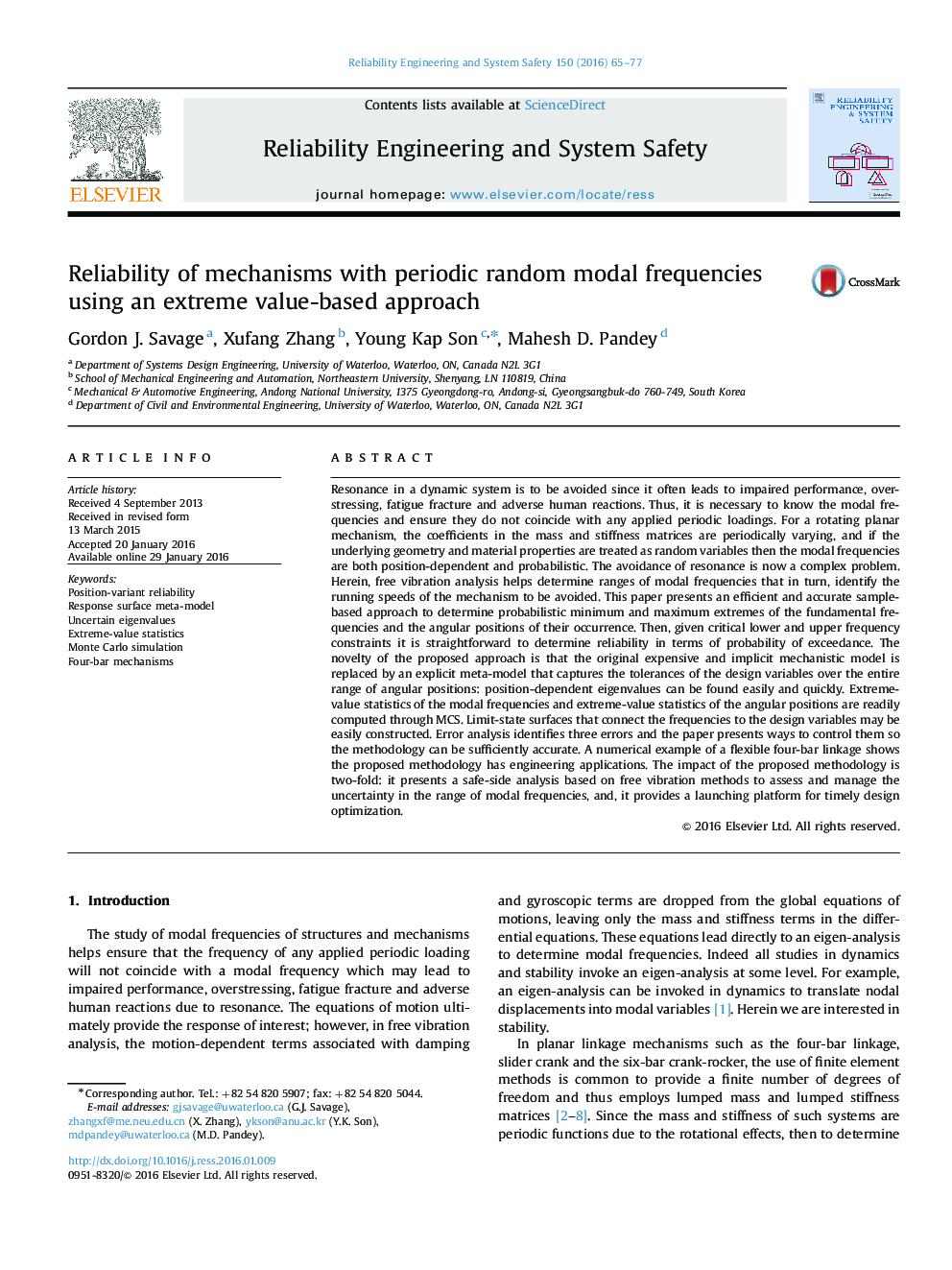| Article ID | Journal | Published Year | Pages | File Type |
|---|---|---|---|---|
| 806700 | Reliability Engineering & System Safety | 2016 | 13 Pages |
•Dynamic behaviour and the resonance phenomenon of an uncertain planar mechanism.•Modal frequency reliability analysis based on free vibration analysis.•An explicit meta-model and extreme-value statistics of the modal frequencies.•Error analysis identifies three errors, and ways to control them are presented.
Resonance in a dynamic system is to be avoided since it often leads to impaired performance, overstressing, fatigue fracture and adverse human reactions. Thus, it is necessary to know the modal frequencies and ensure they do not coincide with any applied periodic loadings. For a rotating planar mechanism, the coefficients in the mass and stiffness matrices are periodically varying, and if the underlying geometry and material properties are treated as random variables then the modal frequencies are both position-dependent and probabilistic. The avoidance of resonance is now a complex problem. Herein, free vibration analysis helps determine ranges of modal frequencies that in turn, identify the running speeds of the mechanism to be avoided. This paper presents an efficient and accurate sample-based approach to determine probabilistic minimum and maximum extremes of the fundamental frequencies and the angular positions of their occurrence. Then, given critical lower and upper frequency constraints it is straightforward to determine reliability in terms of probability of exceedance. The novelty of the proposed approach is that the original expensive and implicit mechanistic model is replaced by an explicit meta-model that captures the tolerances of the design variables over the entire range of angular positions: position-dependent eigenvalues can be found easily and quickly. Extreme-value statistics of the modal frequencies and extreme-value statistics of the angular positions are readily computed through MCS. Limit-state surfaces that connect the frequencies to the design variables may be easily constructed. Error analysis identifies three errors and the paper presents ways to control them so the methodology can be sufficiently accurate. A numerical example of a flexible four-bar linkage shows the proposed methodology has engineering applications. The impact of the proposed methodology is two-fold: it presents a safe-side analysis based on free vibration methods to assess and manage the uncertainty in the range of modal frequencies, and, it provides a launching platform for timely design optimization.
